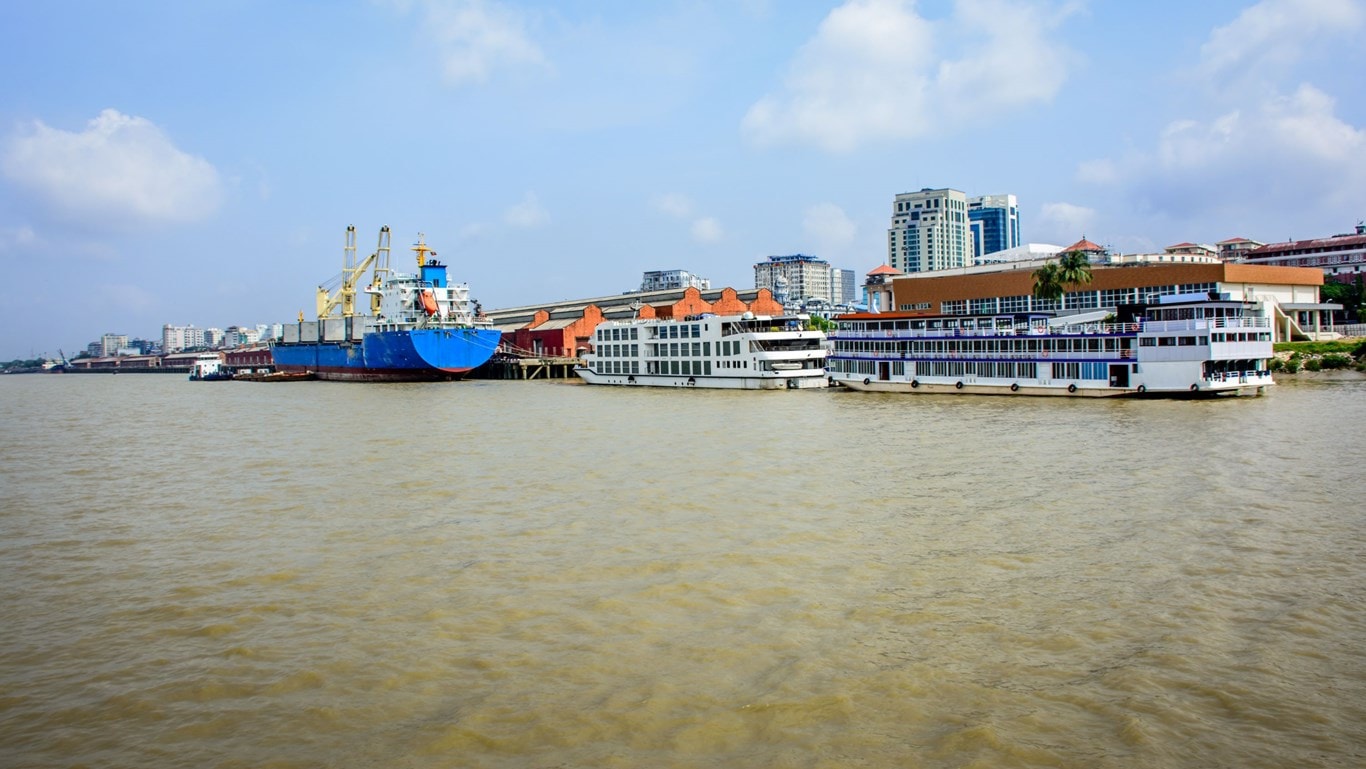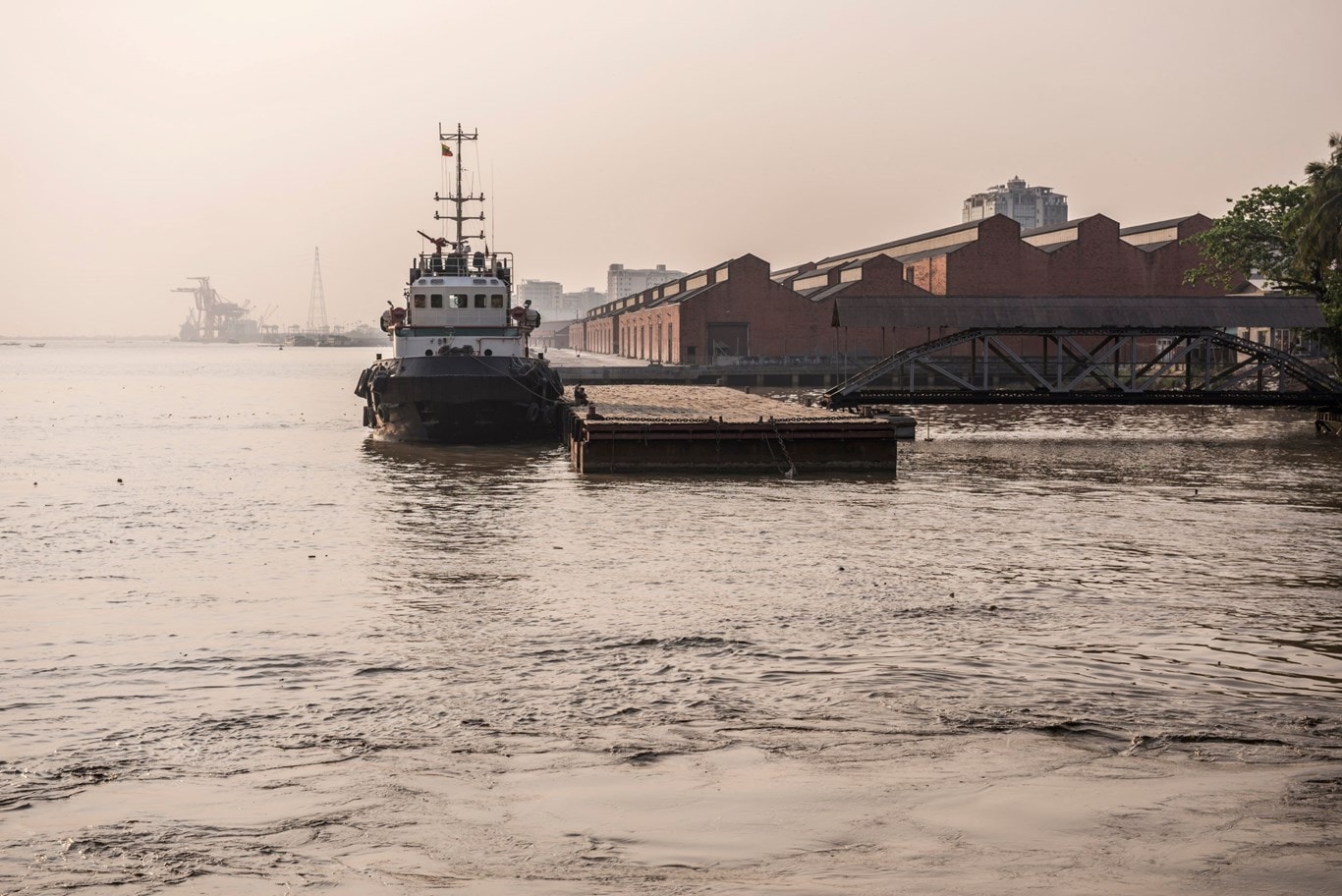Myanmar – Insights, Infrastructure and Maritime Operations at Yangon Port
The Club's local correspondent, Protection and Indemnity Services Asia Ltd, has provided the latest information guide on Yangon Port. Their guide can be found here.
Yangon Port is strategically located on the Yangon River, approximately 17 nautical miles (32 kilometres) inland from Elephant Point at the Gulf of Martaban. Recently expansion has occurred at Yangon Port which has extended the port area towards the west and south from its original position. This expansion has led to a unique management and ownership structure where governmental bodies and commercial enterprises collaborate to manage and operate ports and terminals.
As one of Myanmar's nine coastal ports, Yangon Port plays a pivotal role in trade, facilitating over 90% of the country's imports and exports. The port's infrastructure consists of 27 berths within Yangon Inner Harbour, with a combined quay length of 4,640 meters, and 19 berths in Thilawa Outer Harbour, having a total quay length of 3,591 meters.

Ships entering Yangon Port encounter draft limitations imposed by two bars within the channel. The Outer Bar, located near Elephant Point, creates a barrier at the river mouth, while the Inner Bar, positioned near Monkey Point, presents challenges for access to the port. Vessel’s navigating these waters, particularly those over 200 gross tons (GT), are mandated to engage pilotage services.
Before reaching the pilot station, typically situated around 20 nautical miles south of Elephant Point, the Master of an incoming vessel must provide crucial information, including estimated time of arrival (ETA), draft, speed, length, gross registered tonnage (GRT), and flag. The pilot vessel, equipped with automatic identification system (AIS) and monitoring VHF channels 12 and 16, typically resides near the Lanthaya light ship, and pilot boarding is timed according to tide and vessel particulars.
For safety enhancement, it is recommended that the Master remains on the bridge until berthing or attachment to the mooring buoys is complete. When a vessel is required to proceed to anchor, the preferred anchorage locations are near the Dagon and Lanthaya light ships, especially during the monsoon season when strong tides prevail.
Stevedoring services at Yangon vary between private and public wharves, with skilled labour primarily employed on private docks. Agents coordinate ship entries and exits while customs officials inspect vessels before or after entry to ensure smooth operations. Essential documentation, such as the ship's registry, crew and passenger lists, cargo manifests, customs declarations, and health declarations, is necessary for clearance procedures.

Although instances of piracy are infrequent, reports of theft emphasise the importance of maintaining strong security measures, such as floodlights, deck watch persons, and continuous security patrols to deter thieves attempting to board vessels. The crew must stay vigilant and attentive to ensure the effectiveness of security measures implemented on the ship's access points, as well as guarding against unauthorised approaches by small watercraft.
Myanmar's maritime legal framework is evolving, focusing on implementing fundamental maritime regulations and admiralty law. While the country has yet to ratify several maritime conventions fully, it is a signatory to the United Nations Convention on the Recognition and Enforcement of Foreign Arbitral Awards (New York Convention), providing a mechanism for resolving disputes.
Members requiring further guidance should contact the Loss Prevention Department.
